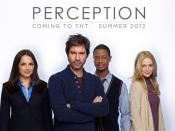The perception-behaviour link was defined as the unintentional, non-conscious effects exerted on social behaviour by social perception. (Chartrand, et al., 2003) It had attracted much attention of researchers in social psychology and the automaticity of the link is a debatable subject. From an evolutionary perspective, the link helped our ancestors to crave for survival when they were being chased after by fierce animals. Much empirical research suggested that our behaviours are often automatically led by perceiving different stimuli, for instance we often imitate facial expressions (Provine, 1986), postures (Bernieri, 1988; LaFrance, 1982), mannerisms (Chartrand and Bargh, 1999) and even the way others articulate (Neumann & Strack, 2000) beyond our awareness. However, recently some evidence emerged showing that the perception-behaviour link can possibly be inhibited. (Macrae & Johnston, 1998; Dijksterhuis, et al., 1998) These findings may be desirable as we may run ourselves into great trouble if we are incapable of controlling our behaviour.
Therefore, this essay would first introduce some early theories of perception-behaviour link and research. We will then draw on recent research that supports or disregards the link, the implications they had and comment on whether it demonstrates that earlier research on the perception-behaviour link is premature. Finally, we will discuss whether there factors moderating the perception-behaviour link and the possible practical consequences.
One of the most known theories that can be explained by the perception-behaviour link is the chameleon effect, which referred to the unintended imitation of postures, mannerisms, facial expressions and other behaviours of partners one is interacting with, leading to oneÃÂs behaviour passively and unconsciously orientated towards matching others in oneÃÂs current social environment. (Chartrand & Bargh, 1999) Study by Provine (1986) and Chartrand & Bargh (1999) were good examples.
An even earlier account was proposed by Carpenter (1874) and James (1890), better known as...


